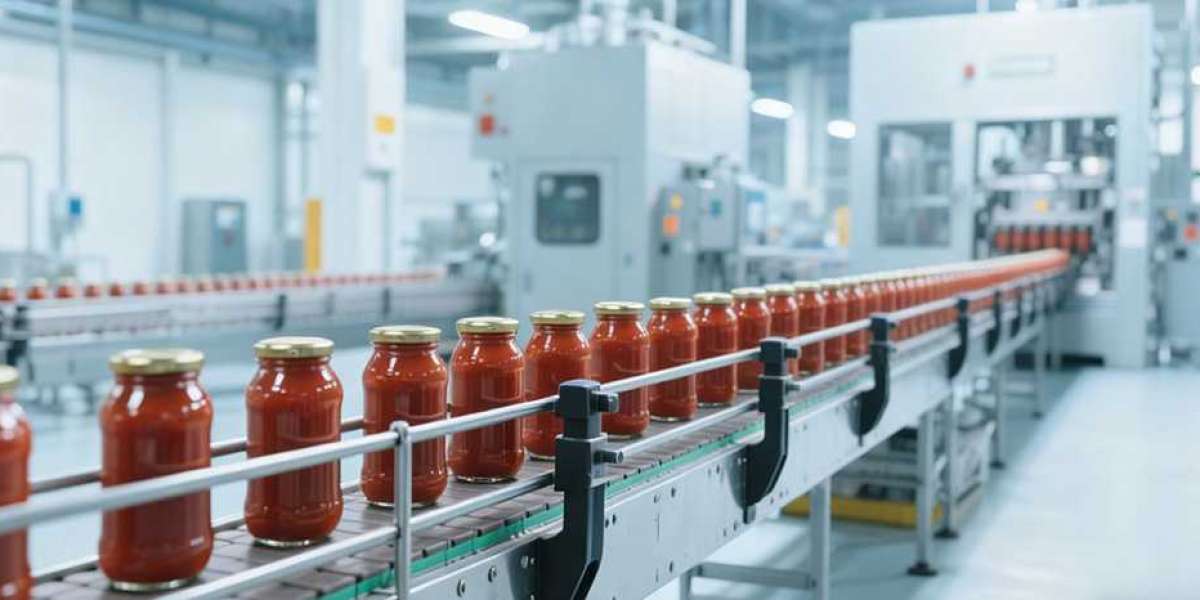High-viscosity sauces—think thick tomato sauce, creamy mayonnaise, rich BBQ sauce, or chunky Alfredo—are delicious, but they’re a nightmare to fill efficiently. Their thick, sticky texture clogs nozzles, causes uneven fills, and slows down production lines. For sauce makers, this means wasted product, missed deadlines, and frustrated customers. The solution? It’s not just about working harder—it’s about using the right sauce filling machine and partnering with a knowledgeable sauce filling machine manufacturer that understands these tricky sauces. Below, we’ll break down simple, actionable steps to handle high-viscosity sauces smoothly and keep your filling process efficient.
Choose a Sauce Filling Machine with High-Viscosity-Specific Features
Not all sauce filling machines are built for thick sauces. Generic machines designed for thin liquids (like soy sauce or vinegar) will fail with high-viscosity products. Look for these non-negotiable features:
Wide, Clog-Resistant Nozzles
Thick sauces get stuck in narrow nozzles—causing 10–15 minute delays to unblock. A good machine for high-viscosity sauces has:
- Nozzles with a diameter of 10mm or more (wider than standard nozzles).
- Smooth internal surfaces (no ridges or seams where sauce can cling and dry).
Some machines even have “self-cleaning” nozzles that flush small clogs with a burst of air—avoiding full stops to disassemble parts.
Adjustable Flow Rates and Pressure Controls
High-viscosity sauces flow slowly, so a one-speed machine will either underfill (too fast) or overfill (too slow). Look for:
- Manual or digital flow rate knobs: Let you slow down filling for extra-thick sauces (like mayonnaise) and speed up slightly for slightly thinner ones (like ketchup).
- Gentle pressure settings: Uses mild pressure to push sauce through nozzles without splattering or creating air bubbles (air bubbles lead to uneven fills).
This ensures every jar or bottle gets the exact amount of sauce—no rework, no waste.
Optional Heating Jackets for Extra-Thick Sauces
For ultra-thick sauces (like cheese sauce or caramelized onion sauce), a machine with heating jackets is a game-changer. These jackets:
- Warm the sauce tank slightly (10–15°C above room temperature) to thin the sauce just enough for smooth flow.
- Don’t alter the sauce’s taste, texture, or quality (unlike overheating, which can ruin flavor).
Heating jackets cut filling time by 30% for the thickest sauces—critical for meeting high production goals.
Optimize Machine Setup and Operation for Thick Sauces
Even the best sauce filling machine needs proper setup to handle high-viscosity sauces. These simple steps prevent issues before they start:
Pre-Treat the Sauce Before Filling
Thick sauces often have lumps or settle over time—leading to uneven fills or clogs. Before loading sauce into the machine:
- Stir it thoroughly (use a mechanical stirrer for large batches) to make sure it’s smooth and consistent.
- Avoid over-stirring (this can add air bubbles, which cause gaps in fills).
For chunky sauces (like salsa or meat sauce), strain out large chunks (over 5mm) that could block nozzles—keep the texture customers love, but remove filling headaches.
Calibrate the Machine for Your Sauce’s Thickness
Don’t rely on “default settings”—calibrate the machine for your specific sauce:
- Run a test batch of 10–20 containers.
- Check if fills are accurate (use a scale to weigh each container).
- Adjust flow rate or pressure slightly if fills are too much or too little.
- Run another test batch to confirm—this takes 10 minutes but saves hours of rework later.
Clean the Machine Frequently (But Efficiently)
High-viscosity sauce dries fast on nozzles and tanks—dried sauce clogs parts and ruins future fills. Clean the machine:
- After every batch: Wipe nozzles with a warm, damp cloth to remove fresh sauce.
- At the end of the day: Use warm, soapy water (or food-safe sanitizer) to clean tanks and nozzles—avoid harsh chemicals that can damage machine parts.
- For machines with detachable nozzles: Soak them in warm water overnight to dissolve dried sauce—no scrubbing needed.
Partner with a Reliable Sauce Filling Machine Manufacturer
A great sauce filling machine is only as good as the sauce filling machine manufacturer behind it. The wrong manufacturer will sell you a “one-size-fits-all” machine that can’t handle thick sauces—or abandon you when you need help. Here’s what to look for:
Manufacturer with Experience in High-Viscosity Sauces
Avoid companies that only make machines for thin liquids. Choose a manufacturer that:
- Has worked with brands making similar sauces (e.g., if you make mayonnaise, ask if they’ve supplied machines to other mayo makers).
- Tests machines with real high-viscosity sauces (not just water): They’ll spot issues like clogging or uneven fills before you receive the machine.
Ask for case studies or references—talking to another sauce maker who used their machine can confirm if it handles thick products well.
Customization Options for Your Unique Sauce
Every high-viscosity sauce is different (some are creamy, some are chunky, some need heating). A good manufacturer will:
- Customize nozzles (wider for chunkier sauces, slightly narrower for creamy ones).
- Add heating jackets if your sauce needs it (no need to buy a separate machine).
- Adjust the machine’s tank size to fit your batch volume (e.g., a small tank for craft sauce batches, a large tank for mass production).
Customization means the machine works for your sauce—not against it.
Fast Post-Sales Support for Unexpected Issues
Even with the right machine, problems happen (e.g., a sudden clog during a big batch). The manufacturer should offer:
- Quick access to replacement parts (like extra nozzles or gaskets) shipped in 3–5 days.
- 24/7 technical support (phone or email): A technician can walk you through fixing small issues in minutes.
- On-site service for big problems: If the machine breaks down, they send someone to repair it fast—no weeks of downtime.
Common Mistakes to Avoid with High-Viscosity Sauce Filling
To keep your process smooth, steer clear of these easy-to-fix mistakes:
- Using a generic filling machine: Don’t try to “make do” with a machine for thin liquids—this leads to clogs and waste.
- Skipping test batches: Assuming default settings work for your sauce will cause uneven fills and rework.
- Ignoring small clogs: A tiny blockage today becomes a big one tomorrow—stop production to clear small clogs immediately.
Handling high-viscosity sauces doesn’t have to be a struggle. By choosing a sauce filling machine with high-viscosity-specific features, optimizing your setup, and partnering with a trusted sauce filling machine manufacturer, you can fill thick sauces smoothly, efficiently, and without waste.
Remember: The key is to work with your sauce’s texture, not against it. The right machine and manufacturer turn “frustrating fills” into “seamless production”—so you can focus on making great sauce, not fixing filling problems.
If you want a quick reference to stay on track, I can help you create a high-viscosity sauce filling checklist that sums up key steps (machine features, setup tips, manufacturer checks) for easy daily use. Would you like that?








